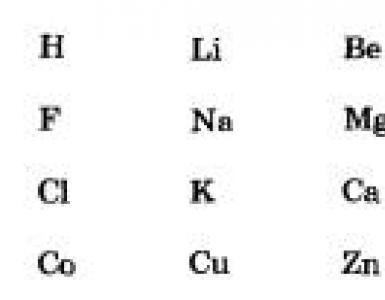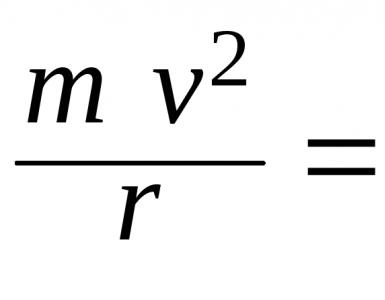The slopes with a barbell on the shoulders “good morning”, an exercise to strengthen the muscles of the back, buttocks and the back of the thigh. Tilts forward with a barbell, or exercise "GOOD MORNING
04.12.2009
Arnold Schwarzenegger Slopes with a barbell on the shoulders "Good morning"
Exercises are called - good morning. Slightly like a polite welcome bow. But the bow should be with a straight back and a barbell on the shoulders. 🙂
In this exercise, the gluteus maximus muscles, the muscles of the back of the thigh (the biceps of the thigh and the semitendinosus muscle), as well as the muscles of the spinal straighteners are used.
Technique of the exercise
1. Put your legs about shoulder width apart. Put the barbell on the trapeze and straighten your back.
2. Starting position: the body is straightened, the back is slightly arched in the lower part, the chest is straightened, the shoulders are slightly pulled back, the muscles of the loins are in tension.
3. Inhale and gently bend over, pushing the pelvis back. The inclination should occur only at the expense of the hip joint, but not the back!
4. Incline occurs until the back is approximately parallel to the floor. Take a short pause and gently return the case to initial position straightening up in the hip joint
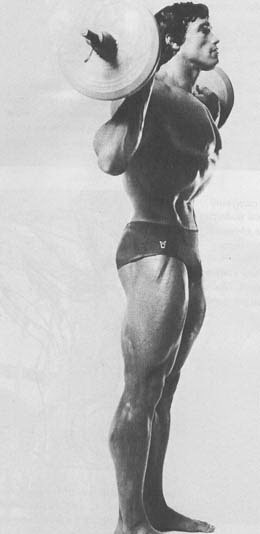
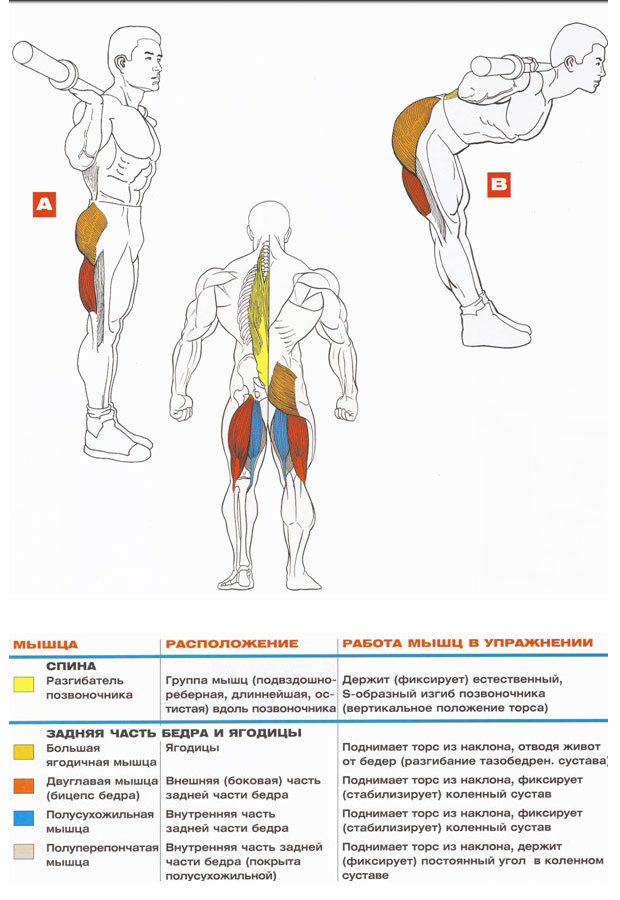
Incline with a barbell on the shoulders "Good morning" Anatomy
5. Exhale after passing the hardest lifting point.
6. When performing the exercise, keep your back in constant tension and keep a slight backbeat.
1. The body is lifted only by force. gluteus muscles and the muscles of the back of the thigh. Do not bend your back, do not round it or try to do an exercise with your back.
2. One of the main working groups of muscles in this movement, the extensor muscles of the back. Do not relax your back.
3. Start doing the exercise with a light weight or with an empty fingerboard. Add weight only when you realize that you are ready for this and your lower back has become stronger.
4. Bend your knees slightly, this will help you to avoid injuries to the back of the knee.
5. The slopes with a barbell on the shoulders are an excellent means of stretching the muscles of the back of the thigh, buttocks and back. Therefore, the slopes with a light weight on the shoulders can be included as a warm-up exercise before performing and. As an independent exercise, leaning with a barbell on the shoulders with a heavy working weight can serve as a serious help in increasing the results in the deadlift and squatting with the barbell on the shoulders
6 If it is difficult for you to keep your back straight, then the weight taken is too heavy for you, or you have bad stretch. The first problem can be eliminated by reducing the working weight. The second can be eliminated like this: while lowering the bar, slightly bend your knees, this will help you keep your back straight. Experienced athletes perform bends on fully extended legs, because they have good stretch and well control weight and their movements.
A great alternative to this exercise can serve. It uses almost the same muscle groups, it is much safer and allows you to use heavier working weights.
The slopes with a barbell on the shoulders is not popular, it is neglected, because it is not designed to increase the mass or rounding of the gluteal muscles. But the slopes significantly increase the strength of the entire muscle group and improve the relief. Exercise has an interesting name - good morning. Strange isn't it? There is a legend that the exercise was given such a name thanks to one athlete - he compared it with the greeting of the Sun, which the inhabitants of the Ancient World politely performed.
Good morning exercise is most often used by lifters, the main reason being the work of the back muscle chain, which includes:
- primary - the broadest, middle and lower back, the back of the thigh;
- synergists - a big adductor and a big gluteus;
- stabilizing - spinal extensors;
- antagonists - oblique, rectus abdominis muscle.
Equipment
Slopes with a barbell on the shoulders should be done carefully, following the step-by-step technique:
- Take a projectile and mark it on the back, like during a squat. Stand straight, bend your legs slightly and place your shoulders a little wider than your shoulders. Straining the top of the back, squeeze the shoulder blades, make a deflection in the lower back;
- On the exhale, do bend forward, keep your back level. While tilting, push the buttocks back. Lean to the parallel position of the hull floor;
- While inhaling, go back, cutting the lower back, hamstrings and buttocks. Perform all movements smoothly, without jerk.
Consider the good morning exercise on video and photo:
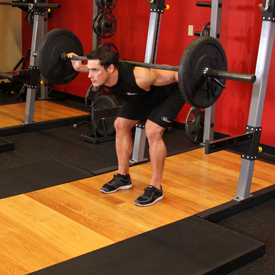
Use these tips to get the most out of your exercise with barbell slopes on your shoulders:
- place the bar on the trapezium, not lower;
- feet can be placed in different ways;
- bending down - exhale, straightening - inhale;
- direct your eyes straight, do not bend your neck;
- use a mirror to monitor performance;
- do a good morning exercise at the beginning or end of your back training;
- choose the weight so that you can perform 10-12 times, do not chase after large weights, in this exercise the main thing is correct, controlled execution;
- the load depends on the bending of the legs: if you flex - the buttocks are involved, if you do not bend - the back of the thighs works.
The benefits of exercise
Benefits:
- development of several muscle groups simultaneously;
- the extensor muscles are strengthened along the length of the spine;
- an increase in the strength of the back, which will be useful in performing basic exercises;
- strengthening, fixing the correct position of the back and the formation of posture;
- promotes weight gain in traction exercises;
Of course, there are contraindications, the main of which are hernia, protrusion, osteochondrosis and other problems with the spine. In exercise, a large load on the spine.
Variations of execution
In addition to the classic version, there are also other ways of leaning with a barbell on the shoulders:
- Sitting on a bench;
- Using rubber belts;
- In the frame;
- Smith's simulator;
- Houses near the table.
Consider a sitting position with rubber bands and a frame:
Barbell on the shoulders in a sitting position
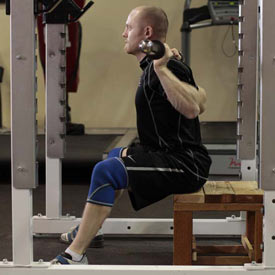

Barbell slopes with elastic
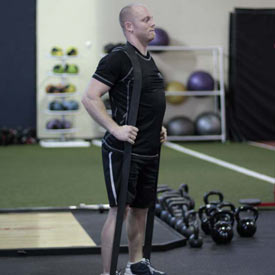


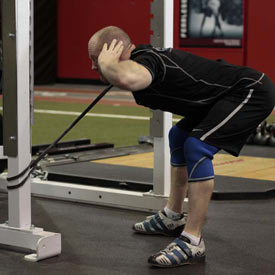
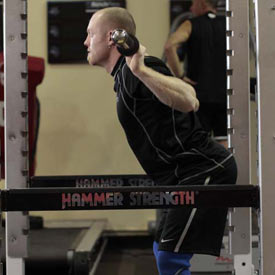
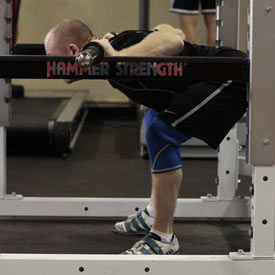
Who, when and how much
- When
The latest exercise in leg training. Before bending with a barbell, it is necessary to make a base, as well as exercises aimed at the biceps of the hips and buttocks;
- how many
10-15 times, 3 sets. Rest 1 minute.
Good morning exercise will not be superfluous in your program, use it properly and achieve excellent results. Successes!
- equipment aimed at strengthening the muscular system of the back (in particular the muscles of the lower part). Exercise allows you to train more and the buttocks, give them a rounded and relief form. In addition, well developed and stretched back of the thigh.
Muscles at work
When performing the exercise “GOOD MORNING” the following muscle groups are involved in the work:
- The main one is the muscles of the lower back and the extensors of the spine, buttocks, and the back of the thigh.
- Additional group - the middle part of the back, the rectus and oblique muscles of the abdomen.
Basic equipment - barbell.
Performance technique
At first glance, it may seem to you that the exercise "GOOD MORNING" has a simple technique. This is not quite true. Even a slight deviation from correct technique Doing this can lead to pain and injury to the lower back.
Starting position:
- Put your legs shoulder-width apart, bend your knees slightly and bend your back;
- Take the neck of the bar with a wide grip and fix it on the back surface of the shoulder girdle;
- Keep your back stiff and shoulder blades joined together;
- Make a smooth forward bend with simultaneous retraction of the pelvis;
- When fixing the torso parallel to the floor, return to the starting position.
On the inhale, lower the body down, on the exhale - return to the starting position.
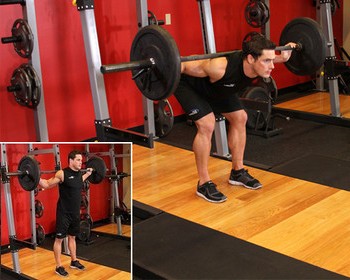
Be careful! You make a forward bend with a barbell due to the work of the hip joint and in no case the lower back.
Alternative variations
There are several options for the exercise "GOOD MORNING":
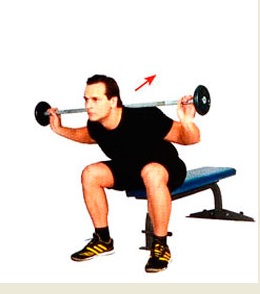
Possible mistakes
The main mistakes in the performance of technology are:
- tilts due to lower back extension. That's right - the effort of the hip joints (buttocks and hip biceps);
- complete relaxation of the extensor muscles of the spine. Right muscle group should not be completely relaxed, otherwise the tension moves to the lower back;
- do not put your head down while performing forward bending with a barbell, but look all the time in front of you;
- don't use too big weight projectile, since the emphasis is on the muscles of the back;
- when performing the technique, make sure that your knees are slightly bent, it increases stability and protects against injury.
The agenda is an interesting exercise, which is called good morningor in the common people torso forward. This exercise develops the back of the thigh, gluteal muscles and extensors of the back. This exercise is similar to the Romanian, all the same muscles are included in the work, only the barbell is not in the hands in front of him, but lies on the shoulders.
Good morning exercise, in contrast to the Romanian thrust, works better on the thigh and buttock biceps, because due to the displacement of the center of gravity, the load on the muscles becomes greater, and the weight of the burden remains small. All this makes this exercise an excellent option for women, because you can work the buttocks and not overstrain large weights.
Performance technique
1. Place the barbell on the trapezium just as you usually put on squats. Place your legs shoulder-width apart and bend your knees slightly. Make a deflection in the lower back, flatten the shoulder blades and feed the chest forward, this will be your starting position.
2. Keeping the back arched, it is necessary to make a forward bend, due to the abduction of the pelvis. We bend down to the level of the parallel with the floor. We return to the starting position, by bringing the pelvis forward. Remember, you need not just lean forward, but take the buttocks back. If the pelvis is in place without movement, then the back will take most of the load and the exercise will look like an hyperextension
1. Look always forward, and better at yourself in the eyes through the mirror, this will keep your posture. If you look down, you can fall forward.
2. Experiment with the width of the leg and the spread of the foot (in or out).
3. Do not chase after weight. This exercise focuses on muscle strain.
4. Perform the torso torso forward on the day of training the legs in order to maximally work out the back of the thigh and buttocks. Choose one favorite exercise either good morning or romanian thrust.
5. Perform at least 10 repetitions.
6. Keep your legs slightly bent, this will keep the lower back bent even at the lowest point.
Charles Polikvin
Why not forget this wonderful exercise.
At the moment there is a tendency to rank the exercises depending on the degree of their potential danger in terms of possible injury. While this view is generally very helpful, it may be that many good exercise will be simply ignored.
Examples of such exercises from the high-risk category are asana “plow” in yoga, stretching the hip joint with the help of so-called. "Barrier seda" and "goose step". The first exercise loads the cervical vertebrae too much (and one respected orthopedic surgeon suggested that it could cause a stroke due to clamping of the blood vessels feeding the brain), other exercises too much overstrain the ligaments and may cause hyper mobility of the knee joint. An example of a good, but mistakenly listed, dangerous exercise is “good morning”.
Many years ago, “good morning” or bending forward with a barbell on your shoulders was a very popular exercise for the gluteus muscles, the extensor muscles of the spine and the hamstrings. Its execution begins from a position with a barbell on the shoulders, as opposed to the barbell’s position on the floor in dead deadoh. “Good morning” includes counter-movement and begins with an eccentric contraction, in contrast to dead rods that do not have counter-movement and begin with a concentric contraction.
Know that the rejection of “good morning” is a rather young phenomenon. Weightlifters have traditionally included this exercise in their training programs, and Russian training guides often recommend it as a key supporting exercise. A typical approach to performing this exercise is to start it with your back and knees slightly bent, and then slowly lean forward (moving your pelvis back) until your body weight begins to pull you forward towards your toes (i.e. you will not begin to feel that you are about to tumble?).
“Good morning” began to lose popularity in the early 70s, when the era of dictatorship of the Bulgarian athletes in weightlifting came, and the use of fewer auxiliary exercises became the norm. Particularly strongly affected by the exclusion from the Olympic program of the bench, as this exercise requires powerful extensor muscles of the spine, allowing you to stabilize the torso at the moment of performing the movement over your head. Bulgarian success training programs, which included only the necessary weightlifting movements and squats, meant that the once popular exercises almost disappeared from the training protocols of the majority of athletes.
Another reason was that due to the growing number of complaints of back pain, many personal trainers have become reluctant to advise "good morning" to their clients. Indeed, many strength trainers began to avoid low back training, dead weights and hyperextension with additional weight. Interestingly, these same trainers did not see anything wrong with the fact that their clients worked in simulators for hyperextension, which, in essence, are an analogue of the “good morning” exercise. One of these “medical-approved simulators”, which allows isometrically feeling the entire amplitude of the line of force, cost about $ 75,000!
Powerlifting helped to “resurrect” “good morning”. Modern methods of doing squats, focusing more on the movement of the hips, and not on the extension of the knees, led to the fact that "good morning" was the main auxiliary exercise in this sport. In order to give more specificity to the biomechanics of this exercise to assist in squats, powerlifters perform it with a wide staging of the legs, thereby more actively involving the muscles in the legs and keeping the barbell at the lower boundary of the trapezius muscles.
Although the traditional “good morning” and “good morning” in a powerlifting style are the most well-known varieties of this exercise, there are still a number of ways to perform it in athletic or bodybuilding styles. The following are examples of such:
Push from behind the head from a position in the slope. This is technically difficult exercise for weightlifting, which is a kind of “intermediate link” between a push from the chest and a push in full amplitude. When performing a traditional push from behind the head, the athlete holds the neck with a wide grip on the shoulders behind the neck, and then, from the squat, with a sharp movement pushes the barbell up. When performing a weightlifting push from the “good morning” position, the athlete leans forward, and then from the finishing position immediately pushes the barbell upwards. This movement is more like the one that occurs when you perform a heavy athletics impulse at full amplitude.
"Good morning" with lifting socks. In this case, the athlete performs the usual version of the exercise "good morning", but in the final position rises to his toes. This allows you to increase the speed of weight lifting during the return to the starting position, and besides, it copies the finishing position of many weightlifting movements better.
"Good morning" with squatting and jumping. In this case, the athlete performs the usual version of the "good morning" exercise, but then makes the jump up (landing with his knees slightly bent). Such jumping exercises allow athletes to increase the weight lifting speed in extensions in a crazy way, as well as develop explosive power. This exercise is performed with relatively light weights and requires a high level of training in order to perform it in a safe manner.
"Good morning" with a rounded back. Although heavy forward bends with a rounded back are not recommended, there is one very weighty argument in their favor - to give the opposite load to the extensors of the spine, usually performing isometric work in a reduced position. By analogy, athletes from figure skating are asked to remove their tips of their fingers to their toes immediately after performing movements that force the spine to unduly backward (for example, Bilman rotation) in order to prevent muscle spasms.
“Good morning” with a rounded back is performed in the same manner as the usual “good morning”, but with a slightly rounded spine. Consider it more of a stretching exercise. Due to the great stress on the vertebral discs, only ultra-low weights are used - it is clear that this exercise should not be performed by those who have problems with intervertebral discs or who have ever experienced pain while performing this exercise.
It should be said that the champion title holder Mr. Universe, according to NABBA, Bruce Randle, performed this exercise with a rounded back with very large weights. Here he had no equal - neither among bodybuilders, nor among powerlifters, nor even among weightlifters. The best result of Randall in the exercise "good morning" with a rounded back was 310.7kg!
"Good morning" sitting. This version of the exercise is performed on a bench (usually on the edge of a bench for a bench press) with a large fingerboard held on the shoulders. Holding the spine in a neutral position, the athlete tries to lie forward as low as possible in terms of comfort during the exercise. It is worth noting that the initial sitting position greatly increases the compression load on the spine, so this version of the exercise is not recommended for those who have had problems with the lower back in the past. Also, it should never be performed with a bar held frontally, as an attempt to hold the bar in place causes an enormous strain on the rhomboid and rotator muscles.
Those athletes who want to quickly increase the strength of the extensors of the hip, can use my advice: a three-set of "good morning" and other exercises for the gluteus and extensor muscles of the spine. Such a tri-set can use various variants of training protocols for total fatigue of all available motor units. Here is the program itself:
A1. "Good morning" standing, 4x6-8 reps, 4020, rest 10 seconds
A2. Romanian deadlift, 4x8-10 reps, 4020, rest 10 seconds
A3. Reverse hyperextension, 4х15-20 repetitions, 20Х0, rest 120 seconds
Although the “good morning” exercise was universally forgotten, it did not change the fact that it still represents great value. Consider all the advantages of the above options for its implementation and select the one that will help you achieve your goals.



